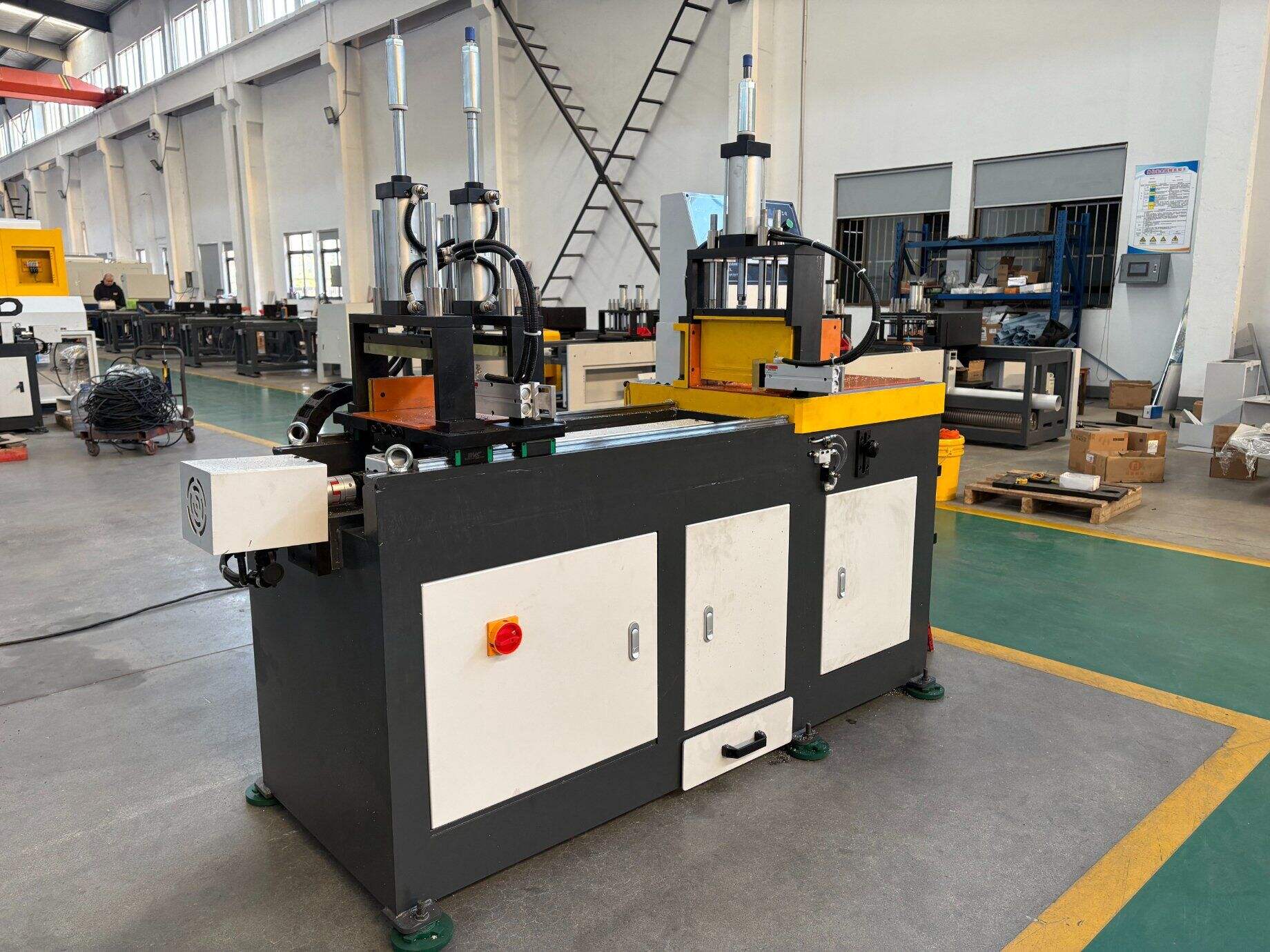High-quality aluminum cutting machines have three core advantages, precisely matching the stringent requirements of automotive parts processing.
- High-precision cutting is the core competitiveness. Utilizing servo motor drive and precision guide rail structure, paired with diamond or carbide saw blades, a cutting tolerance of ±0.02mm can be achieved, ensuring that the aluminum cut is flat and burr-free, with a vertical and tilt-free end face. This allows the material to directly enter the assembly stage without subsequent grinding, significantly reducing process costs.
- Its high-efficiency mass production capability is well-suited to the pace of industrial production. The high-speed spindle design, combined with an automatic feeding system, can complete 3-5 cuts per minute. With the multi-station clamping device, continuous processing can be achieved, and the daily production capacity of a single machine can reach more than 5,000 pieces, easily meeting the needs of mass production of automotive parts.
- It combines intelligence and stability. The integrated PLC control system supports parameterized settings for cutting length and quantity, and is equipped with automatic lubrication, overload protection, and fault alarm functions. This not only reduces the difficulty of manual operation but also effectively extends the service life of the equipment and ensures the stability of continuous 24-hour operation.
In the automotive parts manufacturing industry, aluminum cutting machines are used across the entire supply chain. Whether it's the precision cutting of engine cooling pipes and transmission oil pipes, or the mass production of aluminum profiles for body frames and seat supports, high-quality aluminum cutting machines can provide customized cutting solutions based on different aluminum material specifications (diameter 5-100mm, wall thickness 0.5-10mm) and processing requirements. For example, addressing the pain point of deformation during the cutting of thin-walled aluminum tubes, the equipment effectively prevents tube collapse through flexible clamping and low-speed, stable cutting technology; for cutting high-strength aluminum alloys, specialized wear-resistant saw blades and cooling systems are used to prevent oxidation and blade sticking at the cut, ensuring consistent processing quality.
As the automotive industry shifts towards lightweighting and electrification, the application of aluminum continues to increase, placing increasingly stringent demands on the precision, efficiency, and intelligence of aluminum cutting machines. Choosing an aluminum cutting machine tailored to the processing needs of automotive parts can not only improve production efficiency and reduce costs, but also provide core assurance for product quality, helping companies gain an advantage in fierce market competition. For automotive parts manufacturers, high-quality aluminum cutting machines are no longer simply processing equipment, but key production partners for achieving capacity upgrades and quality improvements.

